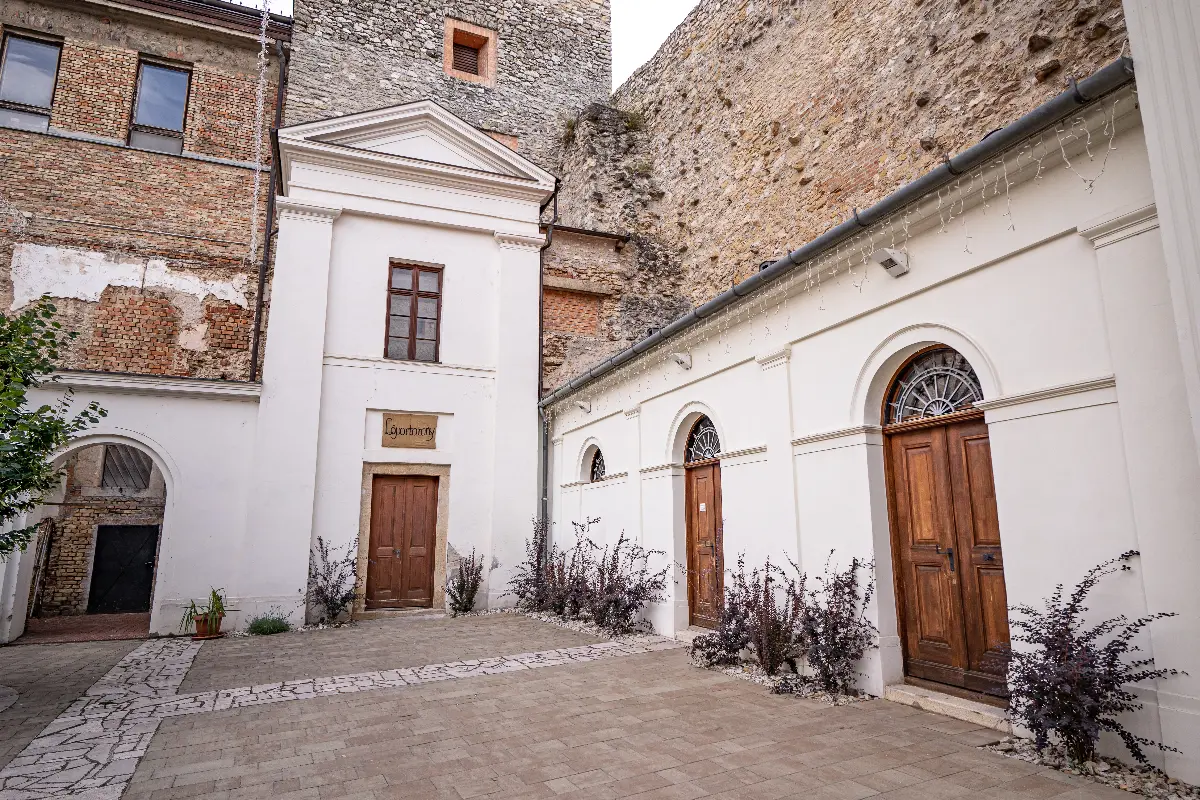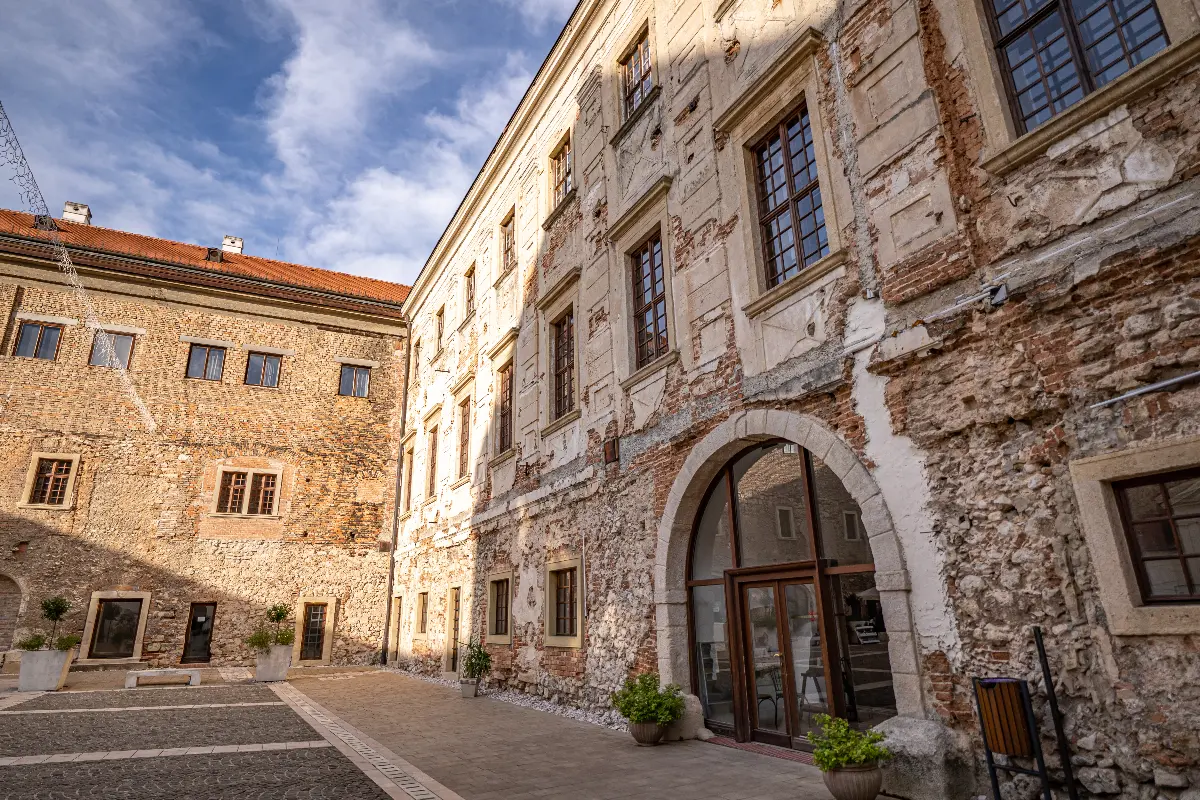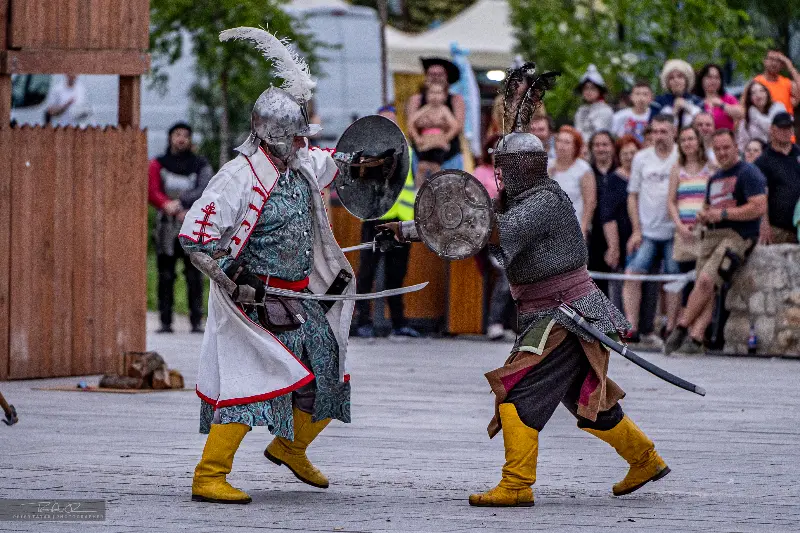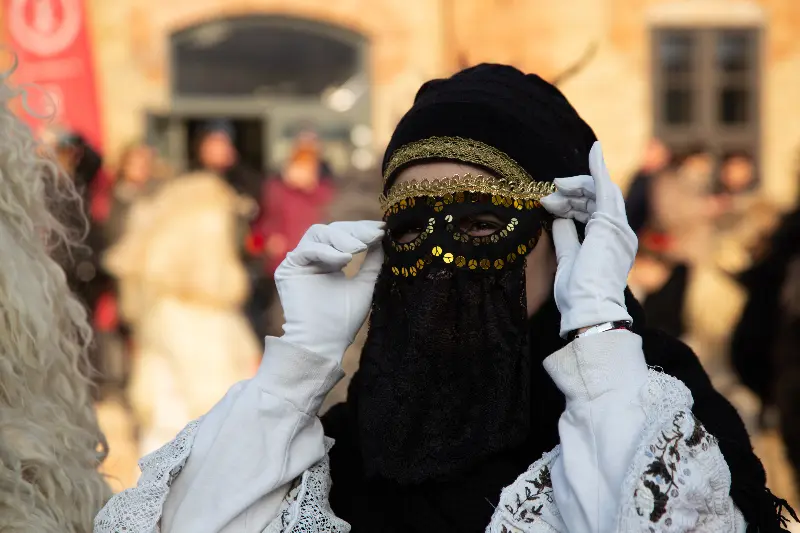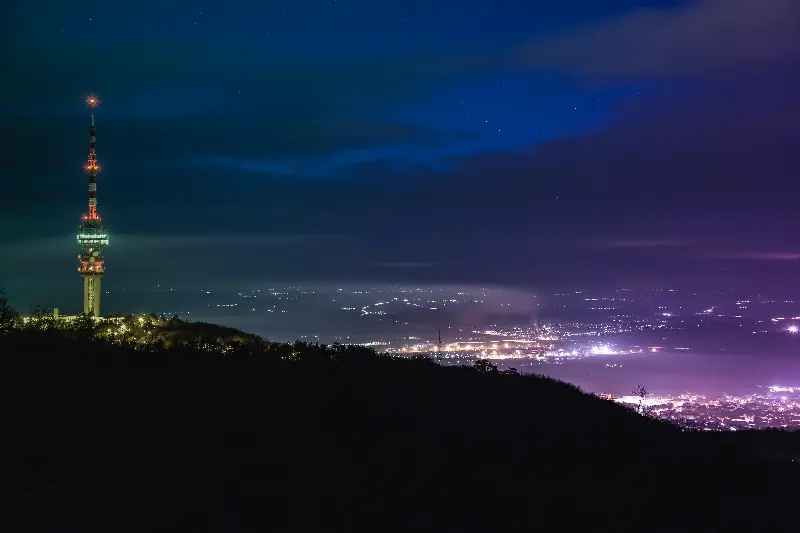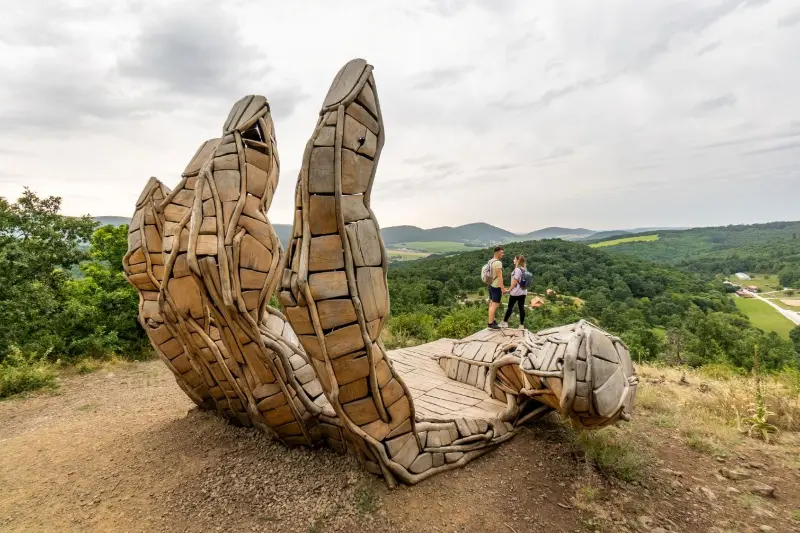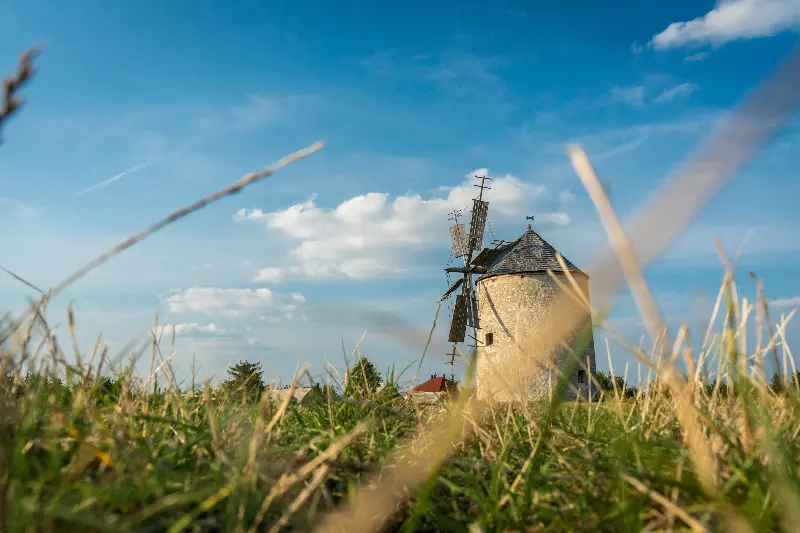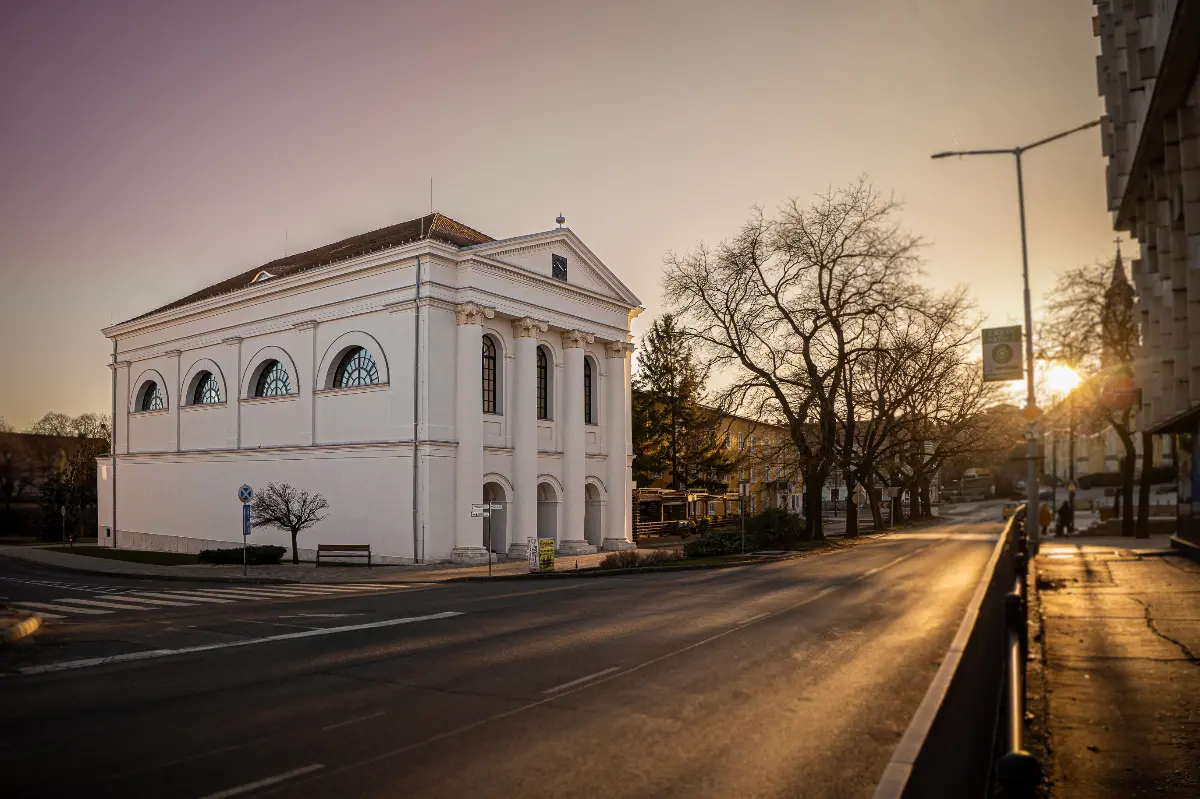
Helyszín címkék:
The adventurous story of a 19th-century synagogue, the Várpalota Art Gallery, from the Holocaust to Picasso
Szabó Sára
A 19th-century building that even survived a bombing
A particularly valuable chapter in the past of Várpalota is the history of the Jewish community. At the beginning of the 19th century, there were 230 Jewish residents in the settlement, and by the end of the 19th century, their number had grown to nearly 600. Working as artisans and merchants, they contributed to the growth of the town’s economy with their diligent work for many decades. In 1839, the community realized a special dream: they had their synagogue built in the classicist style, which was designed by Sebestyén Stokovics. This building not only became a place of prayer, but also a defining centre of community life.
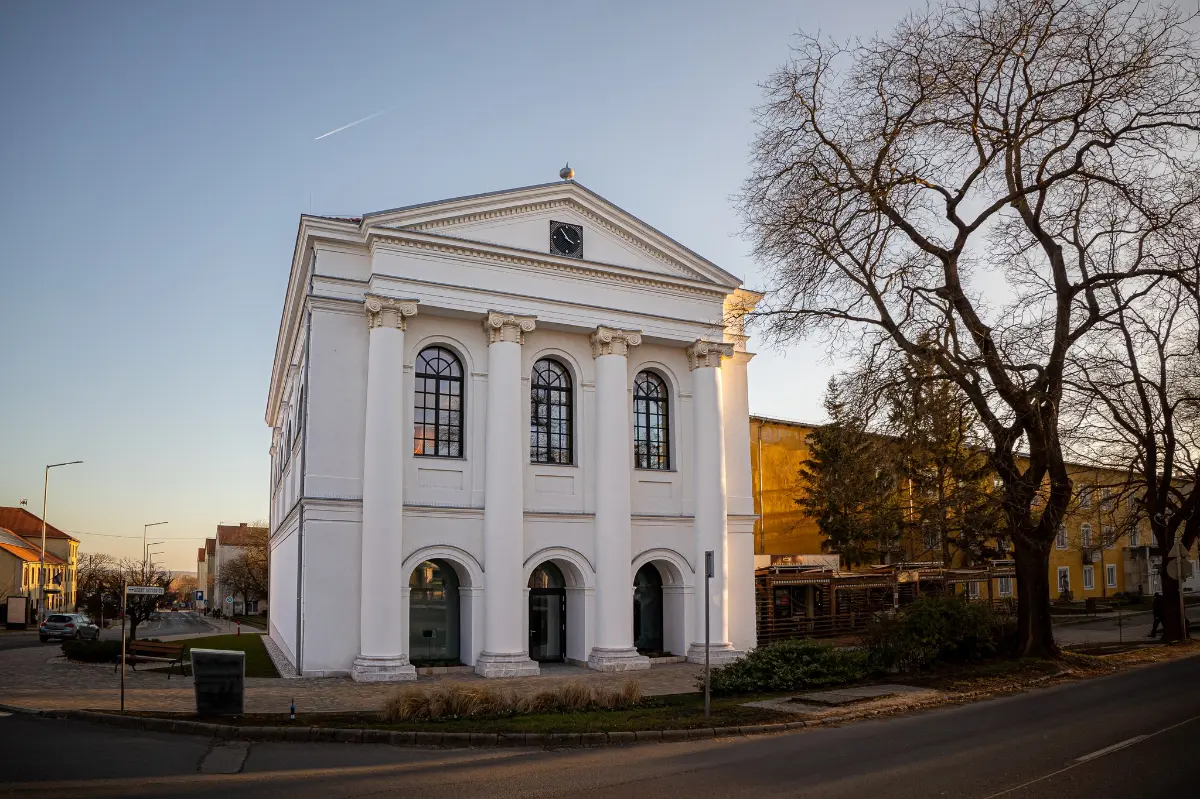
However, the peaceful everyday life was replaced by a dark historical period. After the German occupation of Hungary in 1944, more than 260 Jewish residents were imprisoned in the Várpalota synagogue. The ghetto was built around the building, separating the men, women and children gathered there from the outside world with planks. The deportations began in June 1944: first they were transported to the concentration camp in Sárvár, then to Auschwitz via Košice. Only 18 survived the war, and although they returned to their home town, the community was never reorganized.
The synagogue itself was not spared by the war: its roof structure was burnt down by a bomb attack, the vault partially collapsed, but thanks to the massive walls, it was not completely destroyed. In 1950, the town government decided to save the building. For a long time, it was used by the neighbouring school of colliers, its function changed, but the walls remained as silent witnesses of the former community.
By the middle of the 1980s, the town recognized the building's cultural value and potential. It was renovated and operated as an art exhibition space under the name Gyula Nagy Gallery from 1986 until 2021. In 2023, it was given a new look again: it was reborn as an art gallery, and since then it has played a decisive role in the artistic life of Várpalota, preserving the memories of the past in a dignified manner.
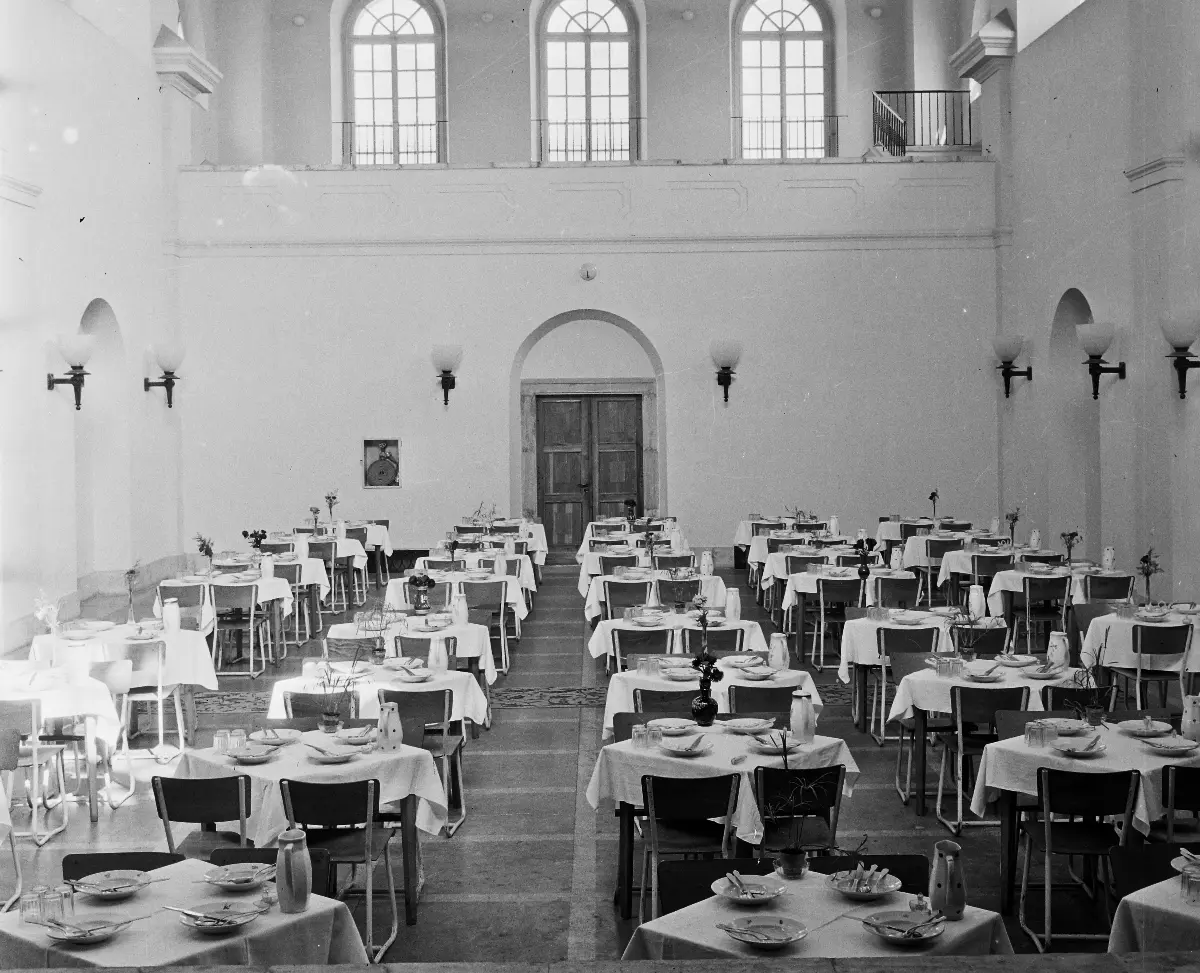
Photo: Fortepan / Bauer Sándor
Formerly a place of prayer, now a home for the arts
Over the past decades, countless concerts, exhibitions and theatrical performances have been held within the walls of the gallery, which were characterized by high professional standards and diversity. The special atmosphere of the classicist building provides an intimate setting for the presentation of works of art, so not only the works, but also the location itself provides a defining experience for visitors.
In 2024, within the framework of the exhibition titled The Greatest, visitors could view works by Chagall, Dalí, Miró, Picasso and Toulouse-Lautrec, among others, in the Várpalota Art Gallery, but the annual event calendar is always extremely colourful!
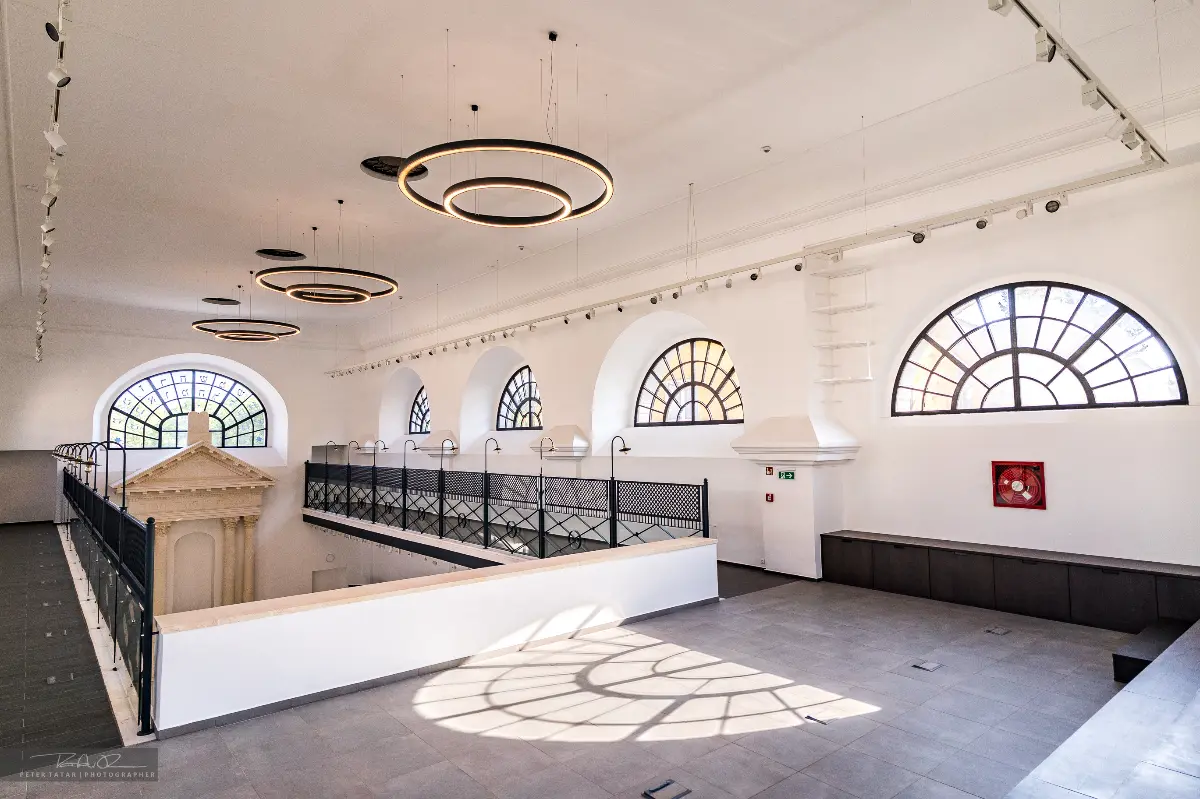
In 2025, art lovers will be able to see works by Erzsébet Udvardi and Joan Miró, among others. For the current exhibition, visit the Facebook page of the Várpalota Art Gallery.
If Várpalota, then Thury Castle!
After visiting the art gallery, it is worth exploring one of the most significant and well-known sights and symbols of Várpalota, the Thury Castle! Built at the end of the 14th century and named after the legendary castle captain György Thury, there are countless programmes to choose from within the walls of the fortress, as the castle is not only a historical monument today, but also a vibrant cultural centre.
In the historical exhibitions you can learn about medieval life, border castle battles and the legendary story of György Thury. Interactive guided tours are also held regularly in the castle, and what is more, you can even tour the fortress with the infamous Transdanubian Lion, György Thury himself! You can try out the escape room in the tower room, which has remained almost in its original state, and you can also take part in historical archery and varlet training. In the latter programme, both young and old can test themselves, get to know and take on the weapons of the former castle defenders.
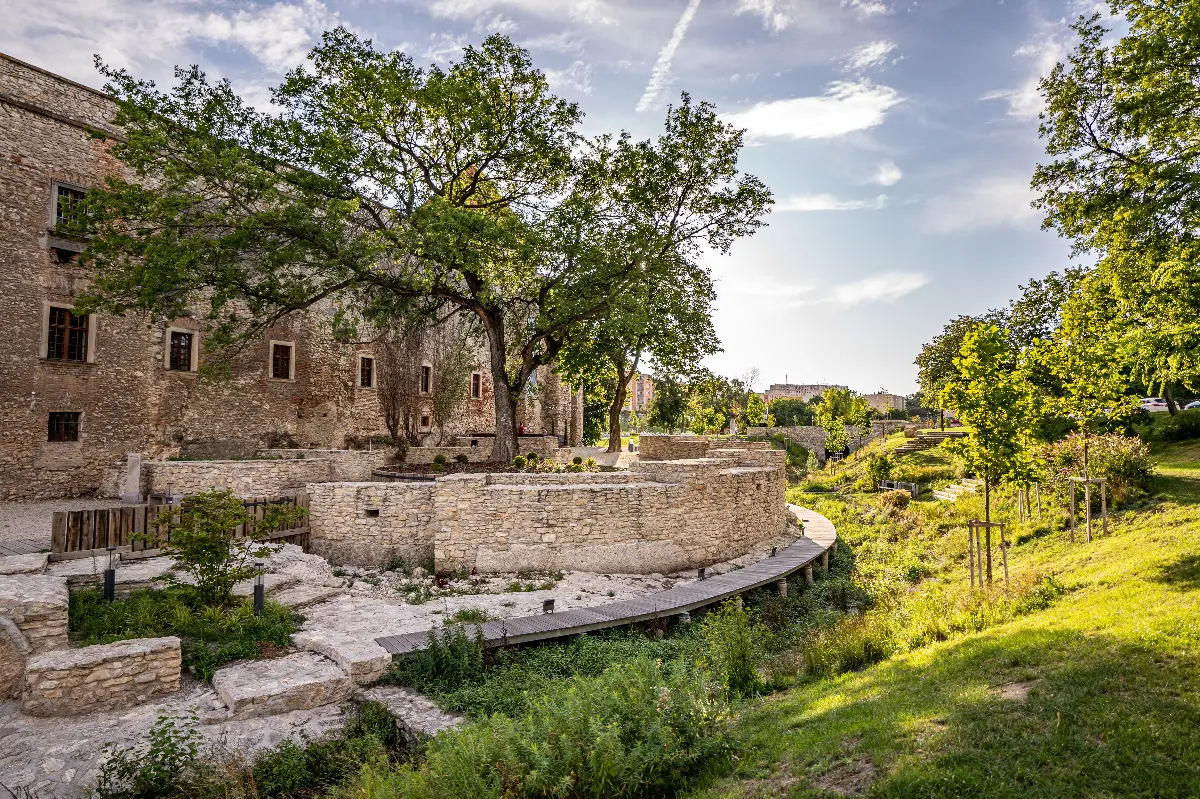
…and countless other attractions in the area
Although Várpalota is not a metropolis, it still has plenty of other attractions. If you would like to see the relics of folk culture up close, we warmly recommend taking a walk to the Sára Fodor Country House at 15 Jókai Street. The farmhouse, built in the 19th century, with its period furnishings, household items and folk textiles, gives a true picture of the area's former way of life. It was named after Sára Fodor, a teacher and ethnographer who did a lot to preserve the region's traditions.
If you feel like hiking, do not forget that the town is part of the National Blue Trail network, which leads through the forests and slopes of the Bakony and Vértes Mountains, offering an excellent opportunity for excursions and recharging your batteries. It is worth making a trip, for example, to the Bátorkő Castle in the heart of the Eastern Bakony, which can be reached through the picturesque Vár Valley. During the approximately 12-kilometre hike, climb from the ruins to the barren plateau of Fajdas Hill, then return along the panoramic trail!

